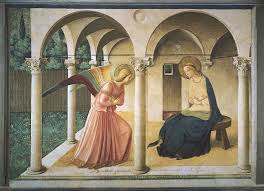Mini Sheet: Troodos Churches, UNESCO World Heritage List (Cyprus 1987)
Troodos Churches, UNESCO World Heritage List (Cyprus 1987)
22 April (Cyprus ) within release Cultural inheritance goes into circulation Mini Sheet Troodos Churches, UNESCO World Heritage List face value 9*15 Cypriot cent
| Mini Sheet Troodos Churches, UNESCO World Heritage List in catalogues | |
|---|---|
| Michel: | Mi:CY KB672-680 |
| Yvert et Tellier: | Yt:CY 668-676 |
Mini Sheet is horizontal format.
Also in the issue Cultural inheritance:
- Stamp - Church of Panayia Asinou, 1100 A.D. face value 15;
- Stamp - Fresco from Church of Panayia Moutoulla, 1280 A.D. face value 15;
- Stamp - Church of Panayia Podithou, 15th cent. A.D. face value 15;
- Stamp - Fresco from Church of St. John Lampadistis, 11th cent. A.D. face value 15;
- Stamp - Fresco from Church of Timios Stavros, 13th cent. A.D. face value 15;
- Stamp - Fresco from Church of Stavros Ayiasmati, 1494 cent. A.D. face value 15;
- Stamp - Fresco from Church of Archangel Michael Pedoula, 1474 A.D. face value 15;
- Stamp - Church of St. Nicholas Stegis, 11th cent. A.D. face value 15;
- Stamp - Fresco from Church of Panayia Araka, 1192 A.D. face value 15;
- Mini Sheet - Troodos Churches, UNESCO World Heritage List face value 9*15;
Mini Sheet Troodos Churches, UNESCO World Heritage List it reflects the thematic directions:
Fresco (pl. frescos or frescoes) is a technique of mural painting executed upon freshly laid ("wet") lime plaster. Water is used as the vehicle for the dry-powder pigment to merge with the plaster, and with the setting of the plaster, the painting becomes an integral part of the wall. The word fresco (Italian: affresco) is derived from the Italian adjective fresco meaning "fresh", and may thus be contrasted with fresco-secco or secco mural painting techniques, which are applied to dried plaster, to supplement painting in fresco. The fresco technique has been employed since antiquity and is closely associated with Italian Renaissance painting.
The United Nations Educational, Scientific and Cultural Organization (UNESCO; pronounced /juːˈnɛskoʊ/) is a specialized agency of the United Nations (UN) with the aim of promoting world peace and security through international cooperation in education, arts, sciences and culture. It has 194 member states and 12 associate members,as well as partners in the non-governmental, intergovernmental and private sector. Headquartered in Paris, France, UNESCO has 53 regional field offices and 199 national commissions
A church building, often simply called a church, is a building used for Christian religious activities, particularly worship services. The term in its architectural sense is most often used by Christians to refer to their religious buildings, but it is sometimes used (by analogy) for buildings of other religions. In traditional Christian architecture, the church is often arranged in the shape of a Christian cross. When viewed from plan view the longest part of a cross is represented by the aisle and the junction of the cross is located at the altar area. Towers or domes are often added with the intention of directing the eye of the viewer towards the heavens and inspiring church visitors. Modern church buildings have a variety of architectural styles and layouts; many buildings that were designed for other purposes have now been converted for church use; and, similarly, many original church buildings have been put to other uses. The earliest identified Christian church was a house church founded between 233 and 256. During the 11th through 14th centuries, a wave of building of cathedrals and smaller parish churches occurred across Western Europe. A cathedral is a church, usually Roman Catholic, Anglican, Oriental Orthodox or Eastern Orthodox, housing the seat of a bishop.



